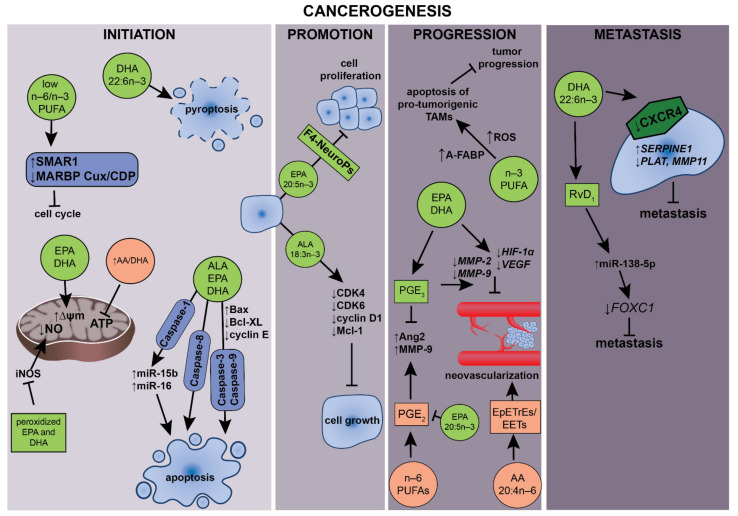Figure 3.
The effects of PUFAs related to the steps involved in the carcinogenic process. In the first stage of carcinogenesis, initiation: PUFAs regulate reactive oxygen species generation; EPA and DHA increase mitochondrial membrane potential (ΔΨm); Peroxidized EPA and DHA suppress iNOS followed by nitric oxide (NO) production; The increased AA to DHA ratio inhibits ATP production. In the second stage, n–3 PUFAs, including ALA, EPA and its derivatives such as F4-Neuroprostanes (F4-NeuroPs), are able to inhibit cancer cell growth and proliferation. During the progression stage: n–3 PUFAs and PGE3 influence tumor progression by inhibiting neovascularization by decreasing MMP, HIF-1α, VEGF and Ang2. Moreover, n–3 PUFAs are able to inhibit tumor progression through ROS-dependent apoptosis of pro-tumorigenic tumor-associated macrophages (TAMs). On the other hand, the n–6 PUFAs derivative, PGE2, increases Ang2 and metaloproteinaase-9 (MMP-9) expression, followed by inducing angiogenesis. Metastasis is also regulated by PUFAs by inducing apoptosis and pyroptosis by caspase pathway activation. The specialized pro-resolving mediator, RvD1, is able to inhibit metastasis.

